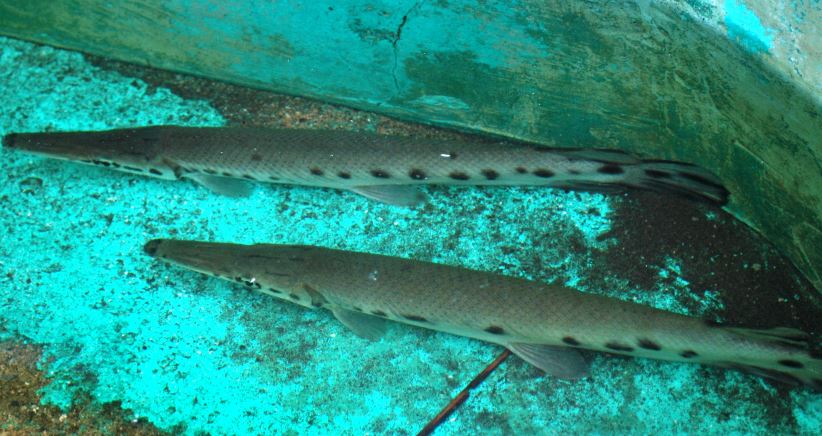
Have you ever heard of a Lizardfish? This mysterious creature may not be as well-known as some of its aquatic counterparts, but it certainly deserves a closer look. One particular species of Lizardfish, known as the Pejelagarto, can be found in freshwater habitats across Mexico and Central America. With its distinctive appearance and fascinating characteristics, the Pejelagarto is a creature that has captured the attention of many scientists and nature enthusiasts alike. In this article, we’ll dive deep into the world of the Pejelagarto to uncover what makes this creature so unique. From its physical features to its habitat and behavior, we’ll explore everything you need to know about this fascinating Lizardfish. So, get ready to discover the secrets of the Pejelagarto and learn what makes this elusive creature so intriguing.
Physical characteristics of the Lizardfish
The Pejelagarto, also known as the Alligator Gar, is a large predatory fish with a distinctive appearance. It has a long, cylindrical body covered in large, diamond-shaped scales that are a dark olive-green color. The scales are so tough that they can even resist a bullet. Its head is elongated and features a mouth filled with sharp teeth that are perfect for catching prey. Interestingly, the Pejelagarto is able to breathe air using a modified swim bladder, which allows it to survive in low-oxygen environments.
The Pejelagarto can grow to be quite large, with some individuals reaching lengths of up to 10 feet and weights of over 300 pounds. However, they typically range from 3 to 6 feet in length. Additionally, the Pejelagarto has a long lifespan, with some individuals living for up to 50 years.
Habitat and distribution of the Lizardfish
The Pejelagarto is native to freshwater habitats in Mexico and Central America, including the Rio Grande, the Gulf of Mexico, and the Yucatan Peninsula. It prefers warm, slow-moving waters with plenty of vegetation and cover for hunting. The Pejelagarto is a solitary fish that spends most of its time in the murky depths of the water, lurking near the bottom in search of prey.
Unfortunately, the Pejelagarto has suffered from habitat loss and overfishing in recent years. Its once widespread distribution has declined, and it is now considered a threatened species. Conservation efforts are underway to protect its remaining habitat and populations.
Diet and feeding habits of the Lizardfish
The Pejelagarto is a carnivorous predator that feeds on a variety of fish and other aquatic animals. Its sharp teeth allow it to catch and devour its prey quickly. The Pejelagarto is an opportunistic feeder, meaning that it will eat whatever prey is available in its habitat. Some of its favorite prey items include catfish, shrimp, and other small fish.
Interestingly, the Pejelagarto is able to detect the electrical fields produced by its prey using special organs called ampullae of Lorenzini. This gives it an advantage when hunting in murky waters where visibility is poor.
Reproduction and life cycle of the Lizardfish
The Pejelagarto is a long-lived fish that reaches sexual maturity at around 10 years of age. It spawns in shallow, weedy areas during the spring and summer months. Females can lay up to 30,000 eggs, which are adhesive and stick to vegetation and other objects in the water.
The eggs hatch within 7-10 days, and the young Pejelagarto are born with a long, slender body and a single row of teeth. They grow quickly and can reach lengths of up to 2 feet within their first year. As they mature, they develop the distinctive scales and teeth that are characteristic of adult Pejelagarto.
Predators and threats to the Lizardfish
The Pejelagarto has few natural predators due to its large size and tough scales. However, it is threatened by human activities such as habitat destruction, overfishing, and pollution. The Pejelagarto is an important food source for many people in its native range, and its scales and other body parts are also used in traditional medicine and cultural practices. This has led to high demand for the species, further contributing to its decline.
Interesting facts about the Lizardfish
- The Pejelagarto is often referred to as the “living fossil” due to its ancient lineage and primitive features.
- The Pejelagarto is an important cultural symbol in Mexico and is featured in many traditional stories and legends.
- The Pejelagarto is a popular game fish and is prized for its size and fighting ability.
Importance of the Lizardfish in the ecosystem
The Pejelagarto plays an important role in its freshwater ecosystem as a top predator. Its feeding habits help to control populations of smaller fish and other prey species, keeping the ecosystem in balance. Additionally, the Pejelagarto provides food and income for many people in its native range, making it an important cultural and economic resource.
Conservation efforts for the Lizardfish
Due to its declining populations, the Pejelagarto is now considered a threatened species. Conservation efforts are underway to protect its remaining habitat and populations. These efforts include habitat restoration, regulation of fishing practices, and public education and outreach. By working together, we can help to ensure the survival of this fascinating and important species.
Conclusion
In conclusion, the Pejelagarto is a fascinating and unique species of Lizardfish that deserves our attention and protection. Its distinctive appearance, feeding habits, and cultural significance make it an important part of the freshwater ecosystems of Mexico and Central America. However, its populations have declined due to human activities, and conservation efforts are needed to ensure its survival. By learning more about this elusive creature and supporting conservation efforts, we can help to protect the Pejelagarto and the ecosystems it calls home.


